| View previous topic :: View next topic |
| Author |
Message |
Peter Megaw
Site Admin

Joined: 13 Jan 2007
Posts: 973
Location: Tucson, Arizona



|
 Posted: Jul 30, 2013 19:46 Post subject: El Tule Mine, Melchor Musquiz, Coahuila, Mexico Posted: Jul 30, 2013 19:46 Post subject: El Tule Mine, Melchor Musquiz, Coahuila, Mexico |
|
|
Over the last 35 years distinctive fluorite-studded Celestine crystals have come out of the El Tule Mine area near Melchor Musquiz in Coahuila Mexico. I recently acquired a small lot and placed several in a display case with pieces I have had for some time. I was immediately struck by how similar most of the pieces are...and how different a few are. I suspect the sources are near neighbors rather than El Tule proper but do not know for sure. Nonetheless they sure make a nice group!
Here is a modified version of what I wrote for Rocks and Minerals recently
El Tule Mine, “Muzquiz,” Coahuila
El Tule Mine lies near Melchor Muzquiz, Coahuila, the town lying more or less at the center of a large regional cluster of low-temperature probable MVT fluorite deposits. Literally hundreds of small (1-8,000 ton), high-grade occurrences have been mined, many with specimen quality crystals, almost all of which are simply labeled “Muzquiz.” The deposits are relatively thin (2-5 meters thick) elongate bodies developed in limestone beneath a regionally extensive shale unit (Del Rio Shale). They are believed to be derived from formation brines (“connate waters”) expelled from the Sabinas and neighboring basins (Kessler 1977). Fluorites from throughout this region are readily recognized by abundant petroleum inclusions and the release of a strong fetid petroleum odor on trimming or scratching. This petroleum provides strong evidence for the involvement of basin brines in deposit formation. In many respects they resemble the fluorite deposits of the Illinois Fluorite District (Heyl 1982; Goldstein 1998; Lillie and Goldstein 2008) with fluorite replacing limestone and filling voids in collapse breccias developed during pre-mineral and intra-mineral cavern formation (Ohle 1985). They differ from the Illinois deposits in that they are closely associated with alkaline rhyolite intrusive bodies that may have contributed fluorine and acted as heat centers that helped focus mineralization (Kessler 1977). However, deep-seated intrusions are believed to underlie Hicks Dome, which hosts the Illinois Fluorite District (Heyl 1982), so the differences may be less than they appear.
Fluorite occurs in these Coahuila deposits with varying amounts of celestine and Baryte (often “celestoBaryte” or strontium-rich Baryte) and mining operations focus on the dominant mineral. Some are fluorite mines with byproduct (or contaminant) celestine/Baryte while others are celestine mines with associated fluorite. The eastern part of this region was the world’s principal producer of celestine for many years because strontium is an effective absorber of X-Rays, and it was a critical ingredient in reducing radiation from Cathode Ray color television screens and computer monitors. Unfortunately for collectors, LED and Plasma screen technology has superseded CRTs, so today most of the celestine operations are idle. Conversely, an upsurge in demand for fluorite has helped bring a number of the region’s fluorite dominant occurrences back into production with a resulting increase in availability of specimens.
Fluorites from El Tule and the general Muzquiz area are dominantly cubic, often with multiple elongate protuberances strongly resembling a cityscape. Crystals to 10+ cm are common, and color ranges from pale violet to purple to dark blackish-purple with the darker color reflecting a higher volume of petroleum-rich inclusions. Color zoning is often strong, generally with the darkest zones near the surface of the crystals. Perhaps the most distinctive specimens from El Tule are the large pale blue celestine blades studded with violet fluorite cubes. In rare cases the fluorite forms an almost complete jacket surrounding the celestine; an excellent example of this is found in the Houston Museum of Natural Science. Calcite is a common associated species but is commonly damaged and removed.
| Description: |
Fluorite on celestine
Mina El Tule, Melchor Muzquiz, Coahuila Mexico
appprox 30 by 30 cm shelf
Group of specimens nominally from the Tule Mine. Many obviously are from the same locality, others are less certain |
|
| Viewed: |
21030 Time(s) |
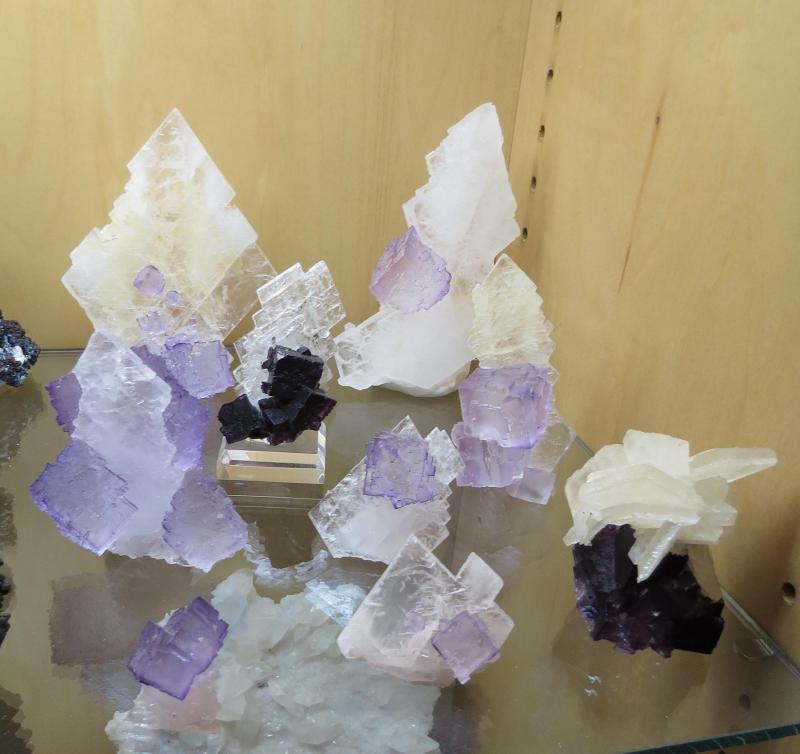
|
| Description: |
fluorite on celestine
Mina El Tule, Melchor Muzquiz, Coahuila Mexico
Fluorite on celestime
Mina El Tule, Melchor Muzquiz, Coahuila, Mexico. 8 x 6 x 5 cm
3 cm fluorite cubes enveloping an 8 cm Celestine crystal. 2013 Find. Peter Megaw specimen and photo |
|
| Viewed: |
21093 Time(s) |
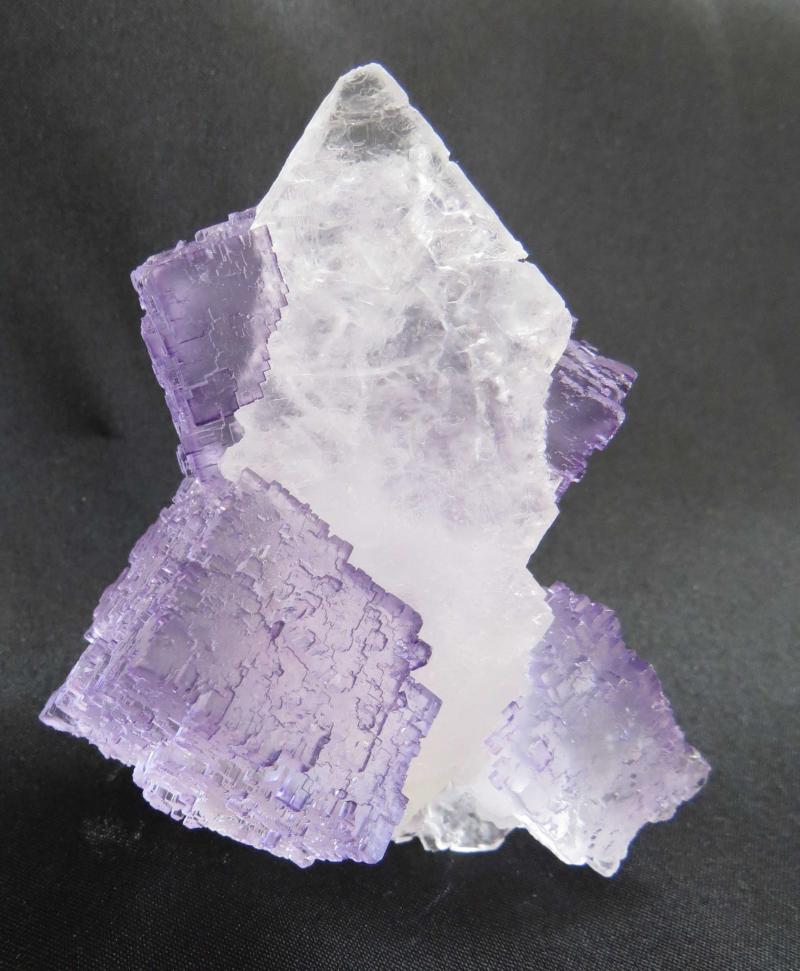
|
| Description: |
Fluorite on Celestine
Mina El Tule, Melchor Muzquiz, Coahuila Mexico
14 x 8 x 5 cm
3 cm fluorite cube perched on side of 14 x 8 cm Celestine crystal. 2013 Find. |
|
| Viewed: |
21017 Time(s) |
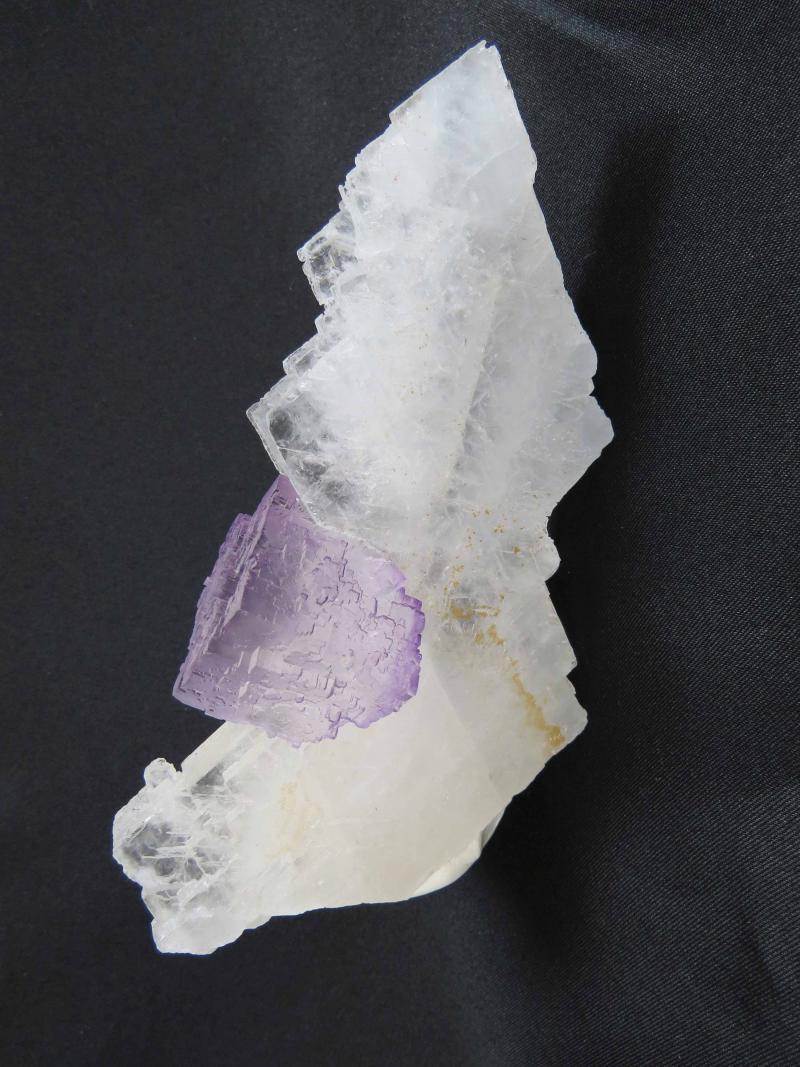
|
_________________
Siempre Adelante! |
|
| Back to top |
|
 |
Ru Smith
Joined: 13 Oct 2012
Posts: 362



|
 Posted: Jul 30, 2013 20:42 Post subject: Re: El Tule Mine, Melchor Musquiz, Coahuila Mexico Posted: Jul 30, 2013 20:42 Post subject: Re: El Tule Mine, Melchor Musquiz, Coahuila Mexico |
|
|
| Very attractive specimens, Peter. The hydrocarbon inclusions are interesting. Do you know what the thermal maturity of the local organic-rich mudrocks (Eagle Ford) is? Perhaps the source of the inclusions is local.
|
|
| Back to top |
|
 |
Mark Ost

Joined: 18 Mar 2013
Posts: 516
Location: Virginia Beach



|
 Posted: Jul 30, 2013 21:09 Post subject: Re: El Tule Mine, Melchor Musquiz, Coahuila Mexico Posted: Jul 30, 2013 21:09 Post subject: Re: El Tule Mine, Melchor Musquiz, Coahuila Mexico |
|
|
| Thanks for sharing those Pete. They are lovely specimens.
|
|
| Back to top |
|
 |
gemlover

Joined: 31 Dec 2008
Posts: 211
Location: Easley, SC



|
 Posted: Jul 30, 2013 21:37 Post subject: Re: El Tule Mine, Melchor Musquiz, Coahuila Mexico Posted: Jul 30, 2013 21:37 Post subject: Re: El Tule Mine, Melchor Musquiz, Coahuila Mexico |
|
|
those are fantastic looking specimens. thank you,
john
_________________
John
John Atwell Rasmussen, Ph.D.. AJP
Geologist and Gemologist |
|
| Back to top |
|
 |
Carlos M.

Joined: 18 Jan 2011
Posts: 40
Location: Torreòn, Coah.



|
 Posted: Jul 31, 2013 04:27 Post subject: Re: El Tule Mine, Melchor Musquiz, Coahuila Mexico Posted: Jul 31, 2013 04:27 Post subject: Re: El Tule Mine, Melchor Musquiz, Coahuila Mexico |
|
|
Hi Peter:
That's an excellent display of fluorites.
Thanks for sharing more photos of your great collection.
_________________
Best regards |
|
| Back to top |
|
 |
Herman van Dennebroek

Joined: 07 Feb 2011
Posts: 87
Location: Blaricum



|
 Posted: Jul 31, 2013 05:30 Post subject: Re: El Tule Mine, Melchor Musquiz, Coahuila Mexico Posted: Jul 31, 2013 05:30 Post subject: Re: El Tule Mine, Melchor Musquiz, Coahuila Mexico |
|
|
Very nice specimens Peter; and interesting information.
_________________
boardmember of Stichting Geologische Aktiviteiten (GEA) |
|
| Back to top |
|
 |
Peter Megaw
Site Admin

Joined: 13 Jan 2007
Posts: 973
Location: Tucson, Arizona



|
 Posted: Jul 31, 2013 12:05 Post subject: Re: El Tule Mine, Melchor Musquiz, Coahuila, Mexico Posted: Jul 31, 2013 12:05 Post subject: Re: El Tule Mine, Melchor Musquiz, Coahuila, Mexico |
|
|
| Ru Smith wrote: | | Very attractive specimens, Peter. The hydrocarbon inclusions are interesting. Do you know what the thermal maturity of the local organic-rich mudrocks (Eagle Ford) is? Perhaps the source of the inclusions is local. |
Ru, I do not know the answer to that, but I suspect it could be gleaned from the Mexican Petroleum literature given the extensive drilling done by PEMEX in that region.
However, El Tule and sister deposits northnorthwest of Musquiz are all hosted in Lower Cretaceous units, with the nearest down-dip Upper Cretaceous rocks exposed over 30 km to the east. The big rhyolite centers that are believed to drive the F system lie to the west so high-temperature fluid movement was probably west to east. It is possible that earlier basin dewatering drove Sr-rich fluids westward from the heart of the basin into Lower Cretaceous host rocks (often in paleokarst probably developed before deposition of the Del Rio Shale) with deposition of early Celestine...later overgrown by fluorite. Hard to see how you get the petroliferous phase out of the higher temperature (westwardly? sourced) F-stage fluids though.
Overall though, you have a good point...there is clearly local variation in the amount of petroliferous inclusions in these fluorites...which ranges from few to so many the crystals look black. Some even have to be washed with gasoline to get tarry gunk off. Further, the inclusions tend to be most abundant in the later growth zones. All these data suggest late addition of petroleum to the brines perhaps after the strongest magmatically-driven fluid pulses have waned, allowing incursion or collapse of lower temperature brines...flowing from the east?
In general, the short-distance variations also suggest local sources or at least local variations in supply. The Eagle Ford Trend projects more or less into this area, so it's one possible source, but the unconformity would have had to be stripped back 25-35 km in this area. The Del Rio is certainly organic rich enough to also be a possible source.
Looking in a more regional sense, Musquiz lies in the Sabinas Basin and there are fluorite, celestine, Baryte and MVT style lead zinc (very low silver) occurrences all around the basin. Eagle Ford could be the source...but it is not the only potential source rock in the basin or even the region. The presence of basin brines in high temperature Carbonate Replacement Deposits throughout northern Mexico is indicated by lead and sulfur isotope data...that tend to show mixing lines between MVT like basin brines and magmatic dominated ore fluids. This is seen across major basins like the Chihuahua Trough and within major deposits like Santa Eulalia. All of these deposits contain fluorite and virtually all contain at least some Celestine...typically as a late phase. Only the most MVT like deposits (Tres Marias in Chihuahua) have pyrobitumen or other hydrocarbons. (Reports of pyrobitumen with rhodochrosite at Santa Eulalia are mistaken...it is hisingerite). Eagle Ford time and strat equivalent units occur within these basins, but similar and potentially better source lithologies exist elsewhere in these basins, especially at depth. Many of these basins are floored by "red beds" overlain by thick evaporate and black shale sections. A good example from the Chihuahua Trough is the lower Cretaceous Cuchillo Formation, which is a thick section of organic-rich pyritic black shale interbedded with evaporates (actually transitional into the basal Glen Rose). Similar units occur deep in the Sabinas basin...and provide decollement surfaces for the Laramide folding event(s).
Perhaps another way of looking at this is asking whether and of the Eagle Ford...or Austin Chalk oilfields contain either fluorite or Celestine. I'm pretty sure the Bull Creek and Lampasos Celestine occurrences are hosted in the Glen Rose...much deeper in the section.
Here are some more pictures...Jeff Scovil shots of my pieces....he's a MUCH better photographer!
| Description: |
Fluorite on celestine
Mina El Tule, Melchor Muzquiz, Coahuila, Mexico
9 x 5 x 4 cm
typical 3 cm fluorite cubes on 9 cm Celestine spear. Peter Megaw specimen, Jeff Scovil photograph |
|
| Viewed: |
20927 Time(s) |
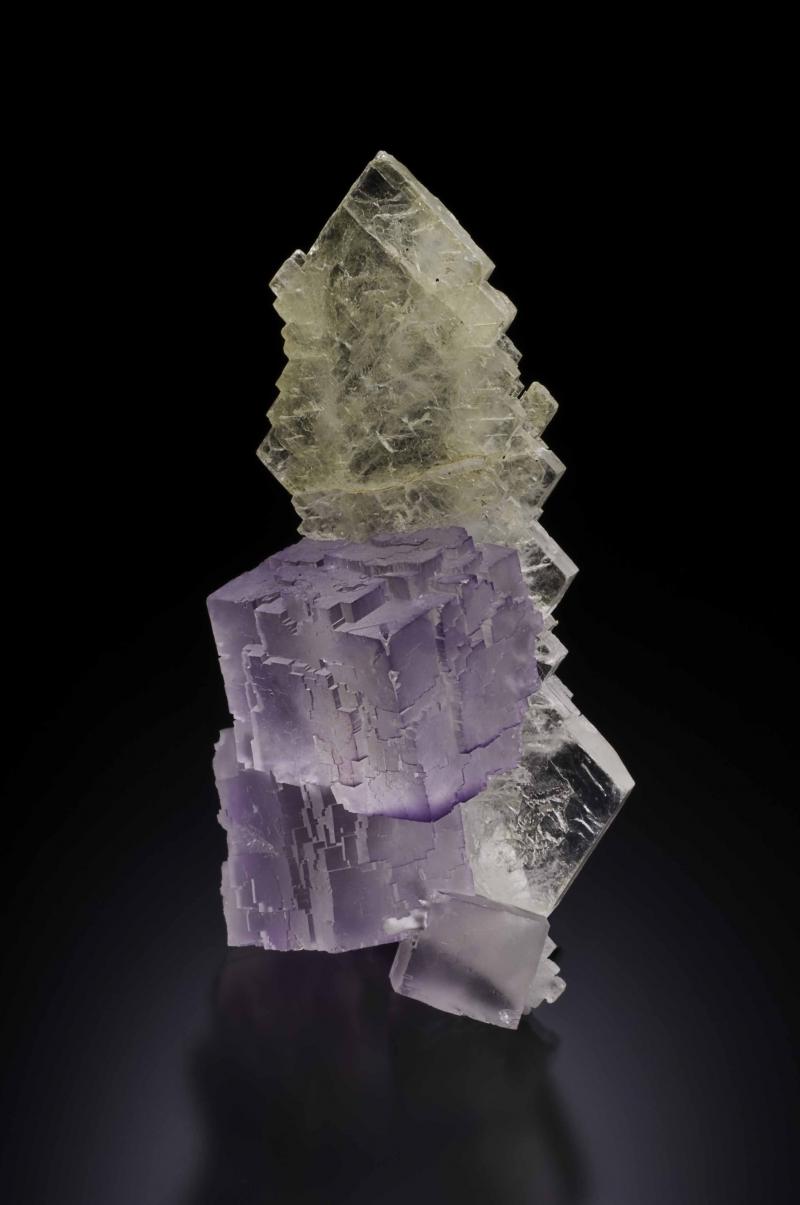
|
| Description: |
fluorite on celestine
Mina El Tule, Melchor Muzquiz, Coahuila, Mexico
5 x 5 x 3 cm
2 cm fluorite on Celestine. This fluorite has different luster and color from the others. Peter Megaw specimen, Jeff Scovil photograph |
|
| Viewed: |
20844 Time(s) |
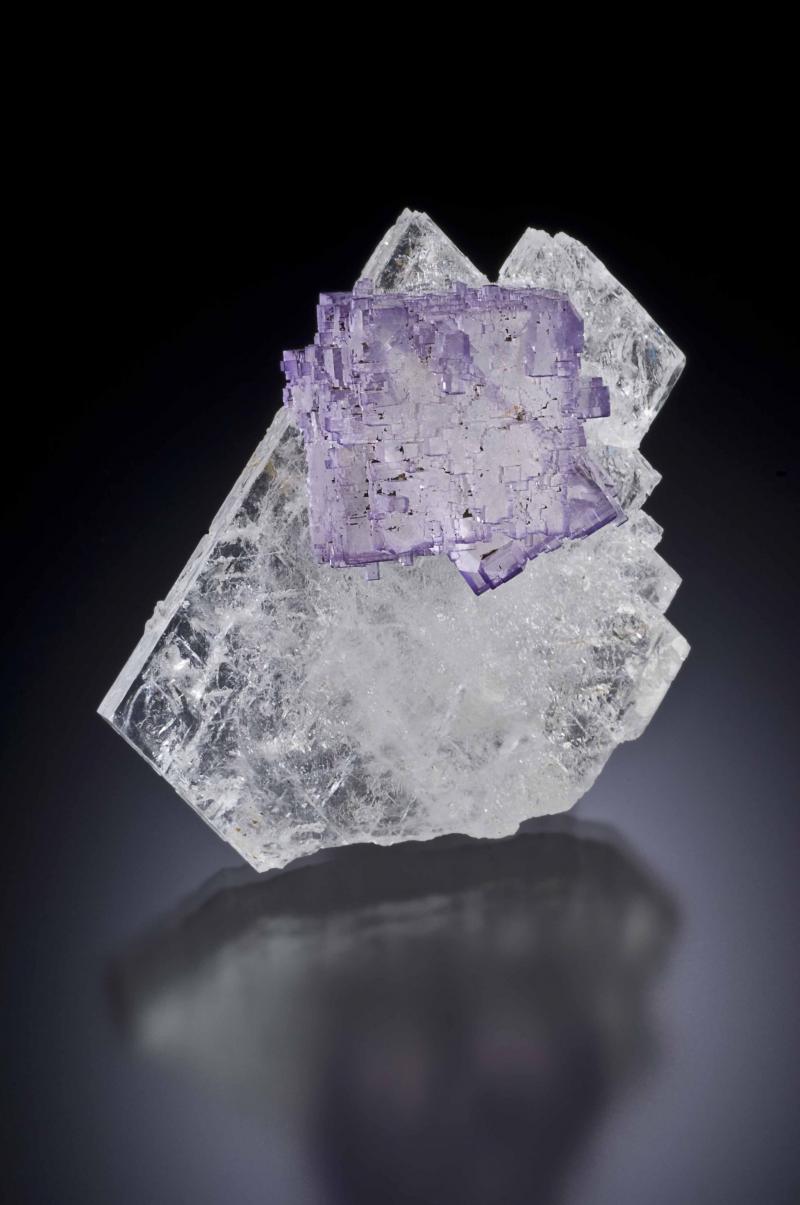
|
| Description: |
calcite on fluorite
Mina El Tule, Melchor Muzquiz, Coahuila, Mexico
9 x 8 x 7 cm
Twinned platy calcite on dark purple petroliferous fluorite.
Peter Megaw specimen, Jeff Scovil photograph |
|
| Viewed: |
20923 Time(s) |
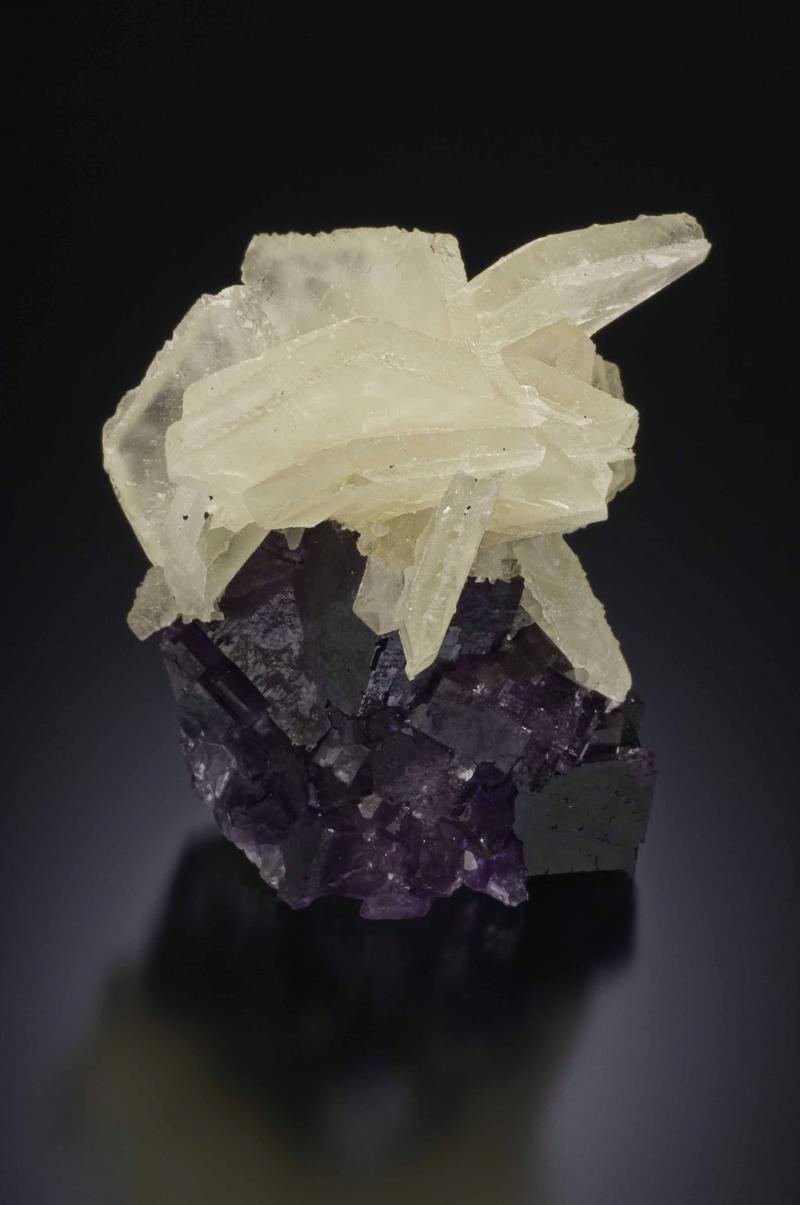
|
_________________
Siempre Adelante! |
|
| Back to top |
|
 |
Nico78
Joined: 31 Oct 2012
Posts: 34
Location: Paris



|
 Posted: Aug 22, 2013 12:16 Post subject: Re: El Tule Mine, Melchor Musquiz, Coahuila, Mexico Posted: Aug 22, 2013 12:16 Post subject: Re: El Tule Mine, Melchor Musquiz, Coahuila, Mexico |
|
|
I'm young and just start collecting since 15 years,
but I have never seen fluorite from this locality and of this quality!
The association with the celestite is simpling awesome!
So, a big thx for shared that!
And especially I really appreciate the fact that you explain and give some indications about the field and the geological context. It's much more interesting that some french forum where only pictures are posted...
Carry on :)
_________________
Young french geologist engineer somewhere around the world .
Also forgive me for my english syntax! I'm not yet fluent! |
|
| Back to top |
|
 |
|





